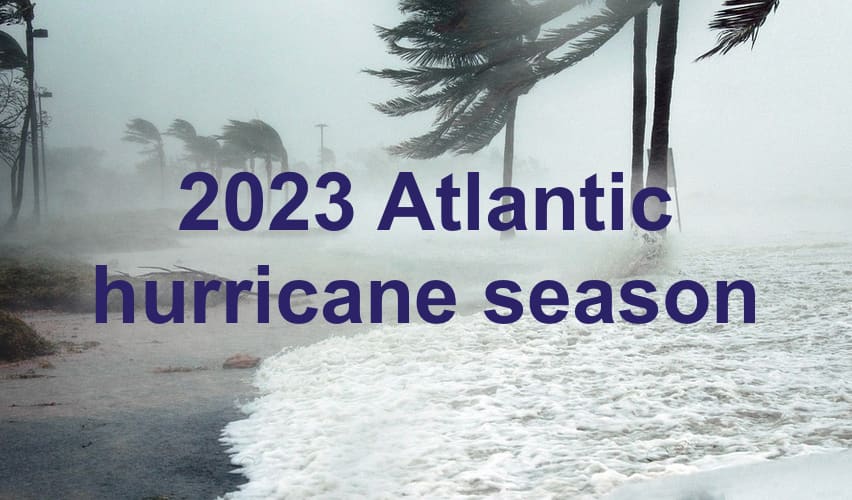Hurricane Idalia insured loss estimates point to lower-half of $3bn – $9bn range

Early estimates for the insurance and reinsurance industry loss caused by the impacts of hurricane Idalia in Florida and southeastern US states appear to be in a range for roughly $3 billion to $9 billion, with most erring towards the lower-half.
When Idalia was strengthening and its track seen as closer to more populated urban centres, the main risk modelling firms had been pointing to figures as high as $20 billion, or slightly more, we’re told.
But, come Wednesday morning, as hurricane Idalia reached major Category 3 strength, there was greater certainty that the track would see the storm come ashore in a less-populated region of the Florida Big Bend, with lower insured values exposed and so most of the industry estimates, which are based on stochastic and modelled loss runs, dropped to sub-$10 billion.
So far, we’ve seen estimates ranging from as low as $3 billion to as high as just above $9 billion.
Output from risk modellers has fallen largely in that range, RMS reported as having a mean stochastic modelled loss estimate of $6.3 billion pre-landfall of Idalia seems a good place to start, being around the middle of the range being seen.
BMS Group’s Senior Meteorologist Andrew Siffert said that the brokers reinsurance division remains comfortable with an industry loss estimate range provided, of $3 billion to as much as $6 billion.
Siffert said that there is some uncertainty, given the Florida Big Bend region has never faced an event like hurricane Idalia, but that factors would help to limit the insurance market’s losses from the storm.
“With higher named storm deductibles, some losses might fall on policyholders. Overall losses should be below most carrier cat programs, so this will not be a reinsurance event as insurance companies retain the losses. Many factors seem to be coming together to limit overall insurance industry losses,” he explained.
Adding, “This is not the devastating event that was feared even 24 hours ago.”
Reinsurance broker Gallagher Re has opted for a similar level of industry loss estimate for hurricane Idalia.
Gallagher Re said that its initial view is that Idalia will cause a “low to mid-single-digit billion (USD) loss for the insurance industry.”
The reinsurance broker said that would include NFIP claims costs, but noted that economic costs could be considerably higher than the insured estimate.
Gallagher Re did note that there is some uncertainty given Florida’s very high levels of inflation.
“The state of Florida is currently dealing with some of the highest inflation in the country. The latest Consumer Price Index data from the US Bureau of Labor Statistics suggested that inflation rates are running nearly double the entire US average. This dollar pressure, in addition to standard spikes in product costs following a disaster (known as demand surge) and still-elevated construction / labor costs, is expected to drive the cost of claims higher than typically expected,” the reinsurance broker explained.
Gallagher Re also commented on Florida Citizens, saying that hurricane Idalia “came ashore in a part of the state where Citizens has among its fewest active policies in force and relatively low total insured exposure as compared to central and southern portions of the state.”
That fact will encourage those backing Citizens reinsurance and catastrophe bond program.
Although, Citizens reinsurance tower is not designed to respond to smaller hurricane loss events, at the sub-$10 billion industry loss level.
Matthew Palazola, Senior Analyst for P&C Insurance with Bloomberg Intelligence, said that his team is focusing on an insurance market loss estimate in the low-single digit billions of dollars.
At the upper-end of estimates seen so far, investment bank UBS’ analysts are reported to have pointed to $9.36 billion as a possible loss range mid-point, although that was as hurricane Idalia was still intensifying, we believe.
It’s also worth noting one economic loss estimate, that came from forecaster Accuweather.
Accuweather said that its, “preliminary estimate of the total damage and economic loss from Hurricane Idalia in the southeastern United States is $18-20 billion.”
That compares to last year’s hurricane Ian, where the economic damage is said to have been $180-210 billion by the company.
The far lower economic loss estimate implies the insurance and reinsurance industry loss estimates will likely continue to come in sub-$10 billion, potentially half that.
There is the matter of damages incurred in Georgia and South Carolina to include, as most estimates so far appear to be more focused on Florida, but even with these the total is not expected to rise too much and Siffert from BMS said that inland damage seen by last night appeared typical so far.
All of which means that hurricane Idalia is not going to be a market moving event for reinsurance and certainly not for the insurance-linked securities (ILS) community.
The additional losses will add to the annual toll and that can help to sustain pricing somewhat.
But, potentially the most dramatic effect for the reinsurance and ILS market could be more demand coming out of Florida, as some insurers may erode a little of their protection due to this storm.
For the catastrophe bond market, the earlier pronouncements that any cat bond market impact would likely be limited to possible erosion of aggregates, remains true at these loss levels.






